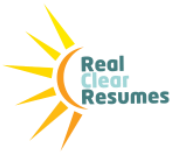Sometimes doctors want to have their patients go through a heart stress test to see how efficiently that critical organ is working – they want to identify and resolve any suspected problems with medication, diet, exercise or a more invasive procedure before a life-changing emergency occurs. They know that taking steps ahead of time will help to maintain optimal heart healthiness and quality of life.
In the same way, it is also good for jobseekers to put their resumes through similar stress testing. Some general questions must be asked – Is their career narrative properly packaged in a smooth and coherent way? Does it showcase best-of-best achievements? Is it flexible enough to quickly customize for different opportunities without rewriting the whole document?
Are you ready to test your resume and analyze its strengths and weaknesses as they can impact your transition? Below are listed what I have found to be fundamental components to successful resumes from over 21 years of experience working with a global client base. Carefully review your own resume with one eye on each aspect and the other on your own document. This will give you a good grasp of your resume’s current health – what may be working well and what needs significant treatment.
1. Each resume should have a short Objective Title at the top of the first page under the contact info area. This single phrase serves as the initial Focal Point for potential employers – it hooks attention and lets them know in which direction you are heading. This title is not meant to be exhaustive, only representative. It is a placeholder and should be changed as often as possible to reflect real-time opportunities.
2. Next in importance is the Profile area – this will give the reader a solid strategic sense of your career arc and high-level abilities that apply to the work path you have chosen so far. Typically, this section is separated into a branding paragraph and then a group of four to six bullets that builds a flexible platform with general skill descriptions. This part is also meant to be representative and directive to the reader, guiding them into connecting the dots and providing a positive overview of what you offer.
3. Usually I call the next section, Core Competencies or Areas of Expertise. Here, 15-20 key concepts and buzzwords should be grouped either sequentially, like pearls on a string, or stacked in tables. These repeat, showcase and reinforce the Profile material from the branding paragraph and strategic bullets. This area in particular can easily be customized with different words per real-time opportunity.
4. The easiest and, some would say, the most important part of the resume is the actual Chronology of your career positions. This is one area where people who write their own resumes slip up – they either under – write or they over-write – too many or too few details. Optimally the jobseeker should highlight only top three or four important job responsibilities or best-of-best achievements. This will help keep the resume to two pages, three maximum – the optimal goal.
5. Finally, the Education section notes completed degrees, GPAs if above 3.5/4.0 and significant college activities or work experience. If you have industry certifications, licenses or designations, they should be bundled up in a Professional Training section. This area should also include significant training courses from the most recent five years. For those in deep IT jobs, a representative Technical Background will give the reader a sense of the range of software, hardware, platforms and other resources involved.
6. Many like to add Community Activities or Interests to wrap up the narrative. The first may help if you have at least three notable items – it can highlight your “outside of work” life. Usually there is not enough room for listing interests – if there is, I would only include those that are conversation-worthy.
7. Once you have evaluated your resume, you should ask yourself some general questions – Can you defend and explain everything you’ve included? Are the numbers, dates and job facts accurate? Do you feel capable of modifying the first three components without breaking up the flow or format?
Quick rule-of-thumb suggestions about packaging and flow:
a. Avoid too many graphics, multiple colors and personal photos as a rule – they can take up too much space and are distracting, as well as be unnecessarily polarizing.
b. Previous positions from before 15-20 years ago should be compressed into a Previous Experience section. This allows you to leave off a chronological history that will immediately date you, while still keeping key skills and achievements in the conversation.
c. Never list professional references or salary history within the resume; they should be listed in collateral documents. Also put any technical research, original articles or conferences into a separate addendum.
Bottom-line is your resume must be able to stand up to the rigors of the job search and employer scrutiny – it must be in it for the long haul, however long it takes without settling for something less. And you must be confident that it reflects your best-of-best achievements and transferrable skills. Your career arc must be cohesive and coherent, making it easier for potential employers to connect the dots and understand the role you will play in their organization.






